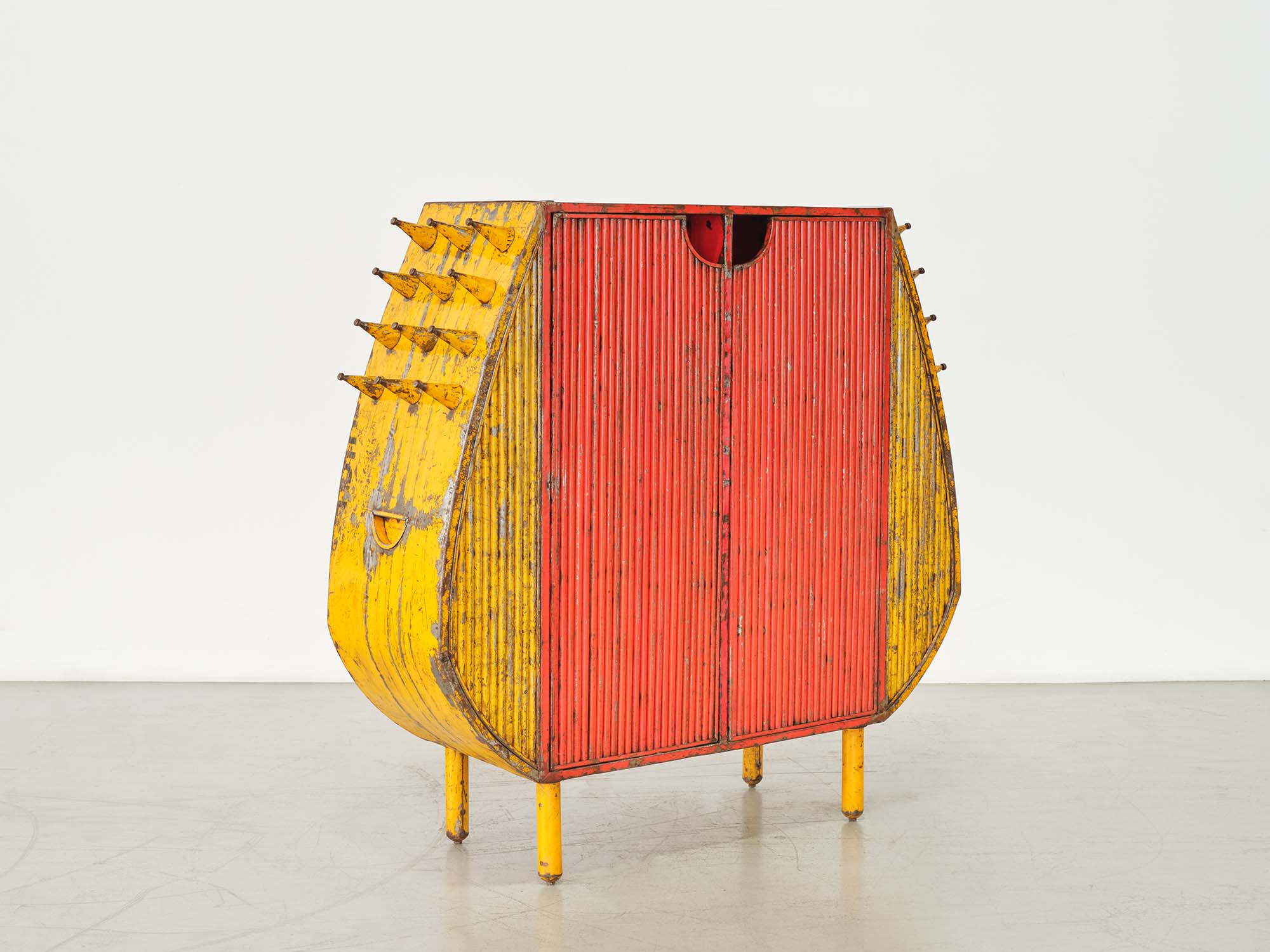By Glenn Adamson
Timbuktu, in Mali, lies a little more than 500 miles from Ougadougou, the capital of Burkina Faso, toward the southern Sahara. To the extent that most Americans have heard of it, they will associate it only with the notion of the far-flung. But the city is actually a hub within its context, and has been for a millennium, having served for centuries as a major entrepôt within the thriving inland economy of what we now call West Africa.
If the history of this part of the world remains too little known, the same can be said for its explosive contemporary creativity. So it is with some pride, but also an awareness of how much more there is to know, that Friedman Benda presents its first solo exhibition of Burkinabé multidisciplinary artist and designer Hamed Ouattara, one of the most prominent voices in the world of contemporary African design. His body of work entitled BOLIBANA, marks his American debut. It represents a continuation of a long-established mode of making on his part, it also reflects new ideas, anchored in the ancient architectural traditions of Timbuktu.
This deep-rootedness is balanced by an equally compelling engagement with the contemporary situation. Ouattara registers the massive importation of resources to his native land by working primarily with upcycled metal. In the past, Ouattara has relied almost exclusively on discarded engine oil barrels – a choice of material that speaks eloquently of the imprint of global trade on this ancient land. It’s a strategy shared by other prominent African artists – notably Roumauld Hazoumé, El Anatsui, and Ibrahim Mahama – but he gives it a unique stamp through the potent, graphic nature of his designs. Intense colors are already present on the appropriated materials, as are haphazard collision marks and occasional fragments of applied language. This unique patina tells of the metal’s former life, questioning the very idea of waste.
Ouattara’s most recent work, showcased here for the first time, marks a new intricacy of approach. His study of African architectural history has prompted him to extend his formal language; to the broad curvature of the barrels, he adds sheet metal shaped through hand-hammering, and other found elements. A particularly distinctive touch is the use of spiked embellishments, equally suggestive of ritual and mechanism. This furniture is at once ancestral and futuristic, chance-based and profoundly intentional. His ethos of self-sufficiency – as well as limited access to resources – dictates that every component of every piece, including fastenings and hinges, is made by hand in his workshop, as are the tools used to do this work.
Yet, if Ouattara’s designs are animated by local artisanal capabilities, they also reflect a connective cosmopolitanism. His creative direction would be unthinkable absent the trajectory of radical design that originally emanated from Europe in the 1960s, and has since found distinctive expression in the USA, Brazil, Japan, Korea, and many other places. It should be no surprise that this restless energy of innovation has been transmitted to Ouagadougou, as well; and that there, it has taken on new meaning. Ouattara’s work registers the global ricochet of forces as at once destructive and generative – economically asymmetrical, but artistically egalitarian – and attests that the latter, despite appearances, is by far the more powerful force. For creativity is found everywhere, and always.










